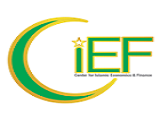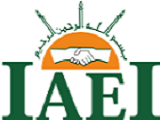The Acceptance Model of Halal Food Products Toward Indonesian non-Muslim Customers
Abstract
The purpose of this study was to determine the model of acceptance of halal food products among non-Muslims in Indonesia. The proposed acceptance model is built through the collaboration of various combinations of theories such as Action Reaction Theory (TRA), Planned Behavior Theory (TPB), and Triandis Model (Triandm). This combination produces a new construct of acceptance model through the variables of inner perspective, the credibility of the halal logo, and habits as latent variables, while the acculturation variable as a mediating variable.
The research was conducted in Indonesia with 317 respondents taken using non-probability sampling technique through purposive sampling method in 24 provinces. The proposed model shows positive and significant results. The inner perspective as a construct that represents a combination of norm variables in TRA and TPB, as well as social variables in TRIANDM shows positive results on acceptance and also positive on acculturation. Likewise with the credibility of the halal logo and the habit of convincing with a positive relationship to acculturation, but in relation to acceptance, the habit shows an insignificant value. Acculturation is a very decisive variable in this study, besides having a significant influence on customer acceptance it is also a mediation for other constructs.
The findings in this study indicate the alignment of the model in the propositions tested. The research results also prove the theoretical alignment of several combinations of theories. Finally, because it was not found in previous research in a similar study, this research can be a pioneer in formulating an appropriate model of acceptance for non-Muslim consumers in Indonesia towards halal food.
Keywords
Full Text:
UntitledReferences
Ajzen, I, & Fishbein, M. (1980). Understanding attitudes and predicting social behaviour. http://www.citeulike.org/group/38/article/235626
Ajzen, Icek. (1991). The Theory of Planned Behavior. Organizational Behavior and Human Decision Processes, 50(2), 179–211.
Alserhan, B. A. (2010). On Islamic branding: Brands as good deeds. Journal of Islamic Marketing, 1(2), 101–106. https://doi.org/10.1108/17590831011055842
Ambali, A. R., & Bakar, A. N. (2014). People’s Awareness on Halal Foods and Products: Potential Issues for Policy-makers. Procedia - Social and Behavioral Sciences, 121(September 2012), 3–25. https://doi.org/10.1016/j.sbspro.2014.01.1104
Arif, S., Jahar, A. S., & Jamal, M. (2019). Epistemologi Halal Dan Aplikasinya. Jurnal Studi Islam & Peradaban, 14(02), 1–24.
Asgart, M. S. (2003). Politisasi SARA: Dari Masa Orba ke Masa Transisi Demokrasi. ISAE, 2001, 1–34.
Ayyub, R. M. (2015a). An empirical investigation of ethnic food consumption A perspective of majority ethnic group. Journal of Islamic Marketing, 117(4), 1239–1255. https://doi.org/10.1179/str.2007.54.4.006
Ayyub, R. M. (2015b). Exploring perceptions of non-Muslims towards Halal foods in UK. British Food Journal, 117(9), 2328–2343. https://doi.org/10.1108/BFJ-07-2014-0257
Aziz, Y. A., & Chok, N. V. (2013). The Role of Halal Awareness, Halal Certification, and Marketing Components in Determining Halal Purchase Intention Among Non-Muslims in Malaysia: A Structural Equation Modeling Approach. Journal of International Food and Agribusiness Marketing, 25(1), 1–23. https://doi.org/10.1080/08974438.2013.723997
Bakar, A., Lee, R., & Rungie, C. (2013). The effects of religious symbols in product packaging on Muslim consumer responses. Australasian Marketing Journal (AMJ), 21(3), 198–204. https://doi.org/10.1016/j.ausmj.2013.07.002
Bergeron, F., Raymond, L., Rivard, S., & Gara, M. F. (1995). Determinants of EIS use: Testing a behavioral model. Decision Support Systems, 14(2), 131–146. https://doi.org/10.1016/0167-9236(94)00007-F
Berry, J. W. (1997). Immigration, acculturation and adaptation. IAPPLIED PSYCHOLOGY: AN INTERNATIONAL REVIEW, 1997, 46(1), 195–211.
Bonne, K., Vermeir, I., Bergeaud-Blackler, F., & Verbeke, W. (2007). Determinants of halal meat consumption in France. British Food Journal, 109(5), 367–386. https://doi.org/10.1108/0070700710746786
Briliana, V., & Mursito, N. (2017). Exploring antecedents and consequences of Indonesian Muslim youths ’ attitude towards halal cosmetic products : A case study in Jakarta. Asia Pacific Management Review, 22(4), 176–184. https://doi.org/10.1016/j.apmrv.2017.07.012
Butt, M. M., Rose, S., Wilkins, S., & Ul Haq, J. (2017). MNCs and religious influences in global markets: Drivers of consumer-based halal brand equity. International Marketing Review, 34(6), 885–908. https://doi.org/10.1108/IMR-12-2015-0277
Center, P. R. (2012). Pew Research Center ‘S Forum on Religion & Public Life. PR Center Washington, DC.
Egmond, C., & Bruel, R. (2007). Nothing is as practical as a good theory. Analysis of Theories and a Tool for Developing Interventions to Influence Energy-Related Behaviour.
Essoo, N., & Dibb, S. (2004). Religious Influences on Shopping Behaviour: An Exploratory Study. Journal of Marketing Management, 20(7–8), 683–712. https://doi.org/10.1362/0267257041838728
Faheem, S., Bukhari, H., Woodside, F. M., Hassan, R., Shaikh, A. L., & Mazhar, W. (2019). Is religiosity an important consideration in Muslim consumer behavior Exploratory study in the context of western. https://doi.org/10.1108/JIMA-01-2018-0006
Ghozali, I., & Latan, H. (2015). Partial least squares konsep, teknik dan aplikasi menggunakan program smartpls 3.0 untuk penelitian empiris. Semarang: Badan Penerbit UNDIP.
Golnaz, R., Zainalabidin, M., Mad Nasir, S., & Eddie Chiew, F. C. (2010). Non-muslims’ awareness of Halal principles and related food products in Malaysia. International Food Research Journal, 17(3), 667–674.
Gufron, A. (2014). Inklusifme Islam di Indonesia. Al- A’raf: Jurnal Pemikiran Islam Dan Filsafat, XI(1).
Haro, A. (2016). Understanding TPB Model, Availability, and Information on Consumer Purchase Intention for Halal Food. International Journal of Business and Commerce, 5(8), 47–56.
Hirschman, C. E. (1983). Aesthetics, Ideologies and the Limits of the Marketing Concept. Jounal of Marketing, 47(Summer), 169–203. https://doi.org/10.2307/j.ctt7zttfx.12
Honkanen, P., Olsen, S. O., & Verplanken, B. (2005). Intention to consume seafood - The importance of habit. Appetite, 45(2), 161–168. https://doi.org/10.1016/j.appet.2005.04.005
Hui, B. P. H., Chen, S. X., Leung, C. M., & Berry, J. W. (2015). Facilitating adaptation and intercultural contact: The role of integration and multicultural ideology in dominant and non-dominant groups. International Journal of Intercultural Relations, 45, 70–84. https://doi.org/10.1016/j.ijintrel.2015.01.002
Imam, G. (2011). Aplikasi analisis multivariate dengan program IBM SPSS 19. Semarang: Badan Penerbit Universitas Diponegoro.
Izberk-Bilgin, E., & Nakata, C. C. (2016). A new look at faith-based marketing: The global halal market. Business Horizons, 59(3), 285–292. https://doi.org/10.1016/j.bushor.2016.01.005
Janmohamed, S. (2016). Generation M: Young Muslims changing the world. Bloomsbury Publishing.
Jaswir, I. (2020). Global Halal Industry : Realities and Challenges. International Webinar on New Normal Era, 5(1), 47–59.
Laroche, M., Kim, C., & Tomiuk, M. A. (1998). Italian ethnic identity and its relative impact on the consumption of convenience and traditional foods. Journal of Consumer Marketing, 15(2), 125–151. https://doi.org/10.1108/07363769810210340
Mittelstaedt, J. D. (2002). A Framework for Understanding the Relationships between Religions and Markets. Journal of Macromarketing, 22(1), 6–18. https://doi.org/10.1177/027467022001002
Mohammed Abdur Razzaque, & Sadia Nosheen Chaudhry. (2013). Religiosity and Muslim consumers’ decision-making process in a non-Muslim society. Journal of Islamic Marketing, 4(2), 198–217.
Muhamad, N., & Mizerski, D. (2013). The effects of following islam in decisions about taboo products. Psychology and Marketing, 30(4), 357–371. https://doi.org/10.1002/mar.20611
Pew Research Center. (2015). The Future of World Religions: Population Growth Projections, 2010-2050. https://www.pewforum.org/2015/04/02/religious-projections-2010-2050/
Rios, R. E., Riquelme, H. E., & Abdelaziz, Y. (2014). Do halal certification country of origin and brand name familiarity matter? Asia Pacific Journal of Marketing and Logistics, 26(5), 665–686. https://doi.org/10.1108/APJML-03-2014-0046
Riptiono, S. (2019). Does Islamic Religiosity Influence Female Muslim Fashion Trend Purchase Intention? An Extended of Theory of Planned Behavior. Iqtishadia, 12(1), 12. https://doi.org/10.21043/iqtishadia.v12i1.4384
Riptiono, S., Suroso, A., & Anggraeni, A. I. (2020). Examining The Determinant Factors On Consumer Switching Intention Toward Islamic Bank In Central Java. 8(2), 364–372.
Salam, M. T., Muhamad, N., & Leong, V. S. (2018). Measuring religiosity among Muslim consumers : observations and recommendations. Joural of Islamic Marketing. https://doi.org/10.1108/JIMA-02-2018-0038
Sari, D. K., Mizerski, D., & Liu, F. (2017). Boycotting foreign products: a study of Indonesian Muslim consumers. Journal of Islamic Marketing, 8(1), 16–34. https://doi.org/10.1108/JIMA-12-2014-0078
Schlegelmilch, B. ., Khan, M., & Hair. Jr, J. F. (2016). Halal endorsements: stirring controversy or gaining new customers? International Marketing Review, 33(1).
Shah Alam, S., & Mohamed Sayuti, N. (2011). Applying the Theory of Planned Behavior (TPB) in halal food purchasing. International Journal of Commerce and Management, 21(1), 8–20. https://doi.org/10.1108/10569211111111676
Shahid, S., Ahmed, F., & Hasan, U. (2018). A qualitative investigation into consumption of halal cosmetic products: the evidence from India. Journal of Islamic Marketing, 9(3), 484–503. https://doi.org/10.1108/JIMA-01-2017-0009
Sholihin, M., & Ratmono, D. (2013). Analisis SEM-PLS dengan WarpPLS 7.0: untuk Hubungan Nonlinier dalam Penelitian Sosial dan Bisnis. Penerbit Andi.
Sjahrifa, C., & Fathia, C. A. (2019). Young Indonesian Muslim women consumer behavior toward modest sportswear. 13(4), 276–288.
Sugiyono, P. D. (2017). Metode Penelitian Bisnis: Pendekatan Kuantitatif, Kualitatif, Kombinasi, dan R&D. Penerbit CV. Alfabeta: Bandung.
Sukoco. (2020). Halal Standard For Implementing Law 33/2014 For Halal Industry In Indonesia. International Webinar on Halal Products.
Syed Adil, S., Maqsood Hussain, B., & Sarwar M, A. (2021). Integrative review of Islamic marketing. Joural of Islamic Marketing, 60(2), 420–453.
Triandis, C. H., & Suh, M. E. (1982). CULTURAL INFLUENCESON PERSONALITY. Annual Reviews of Psychology, 1(3), 239–241. https://doi.org/10.1016/S0277-5387(00)87158-2
Triandis, H. (1977). ‘Interpersonal Behavior’. Monterey, CA: Brooks/Cole. In Design for Sustainable Behaviour to Change Consumer Behaviour (Vol. 14, Issue 4, pp. 427–445).
Wibowo, M. W., & Ahmad, F. S. (2016). Non-Muslim Consumers’ Halal Food Product Acceptance Model. Procedia Economics and Finance, 37(16), 276–283. https://doi.org/10.1016/s2212-5671(16)30125-3
Wilkins, S., Butt, M. M., Shams, F., & Pérez, A. (2019). The acceptance of halal food in non-Muslim countries. Journal of Islamic Marketing.
Wilson. A.J. (2014). The Halal Phenomenon: An Extension or a New Paradigm? Social Business, 4(3), 255–271. https://doi.org/10.1362/204440814x14103454934294
Wilson, J. A. J., Belk, R. W., Bamossy, G. J., Sandikci, Ö., Kartajaya, H., Sobh, R., Liu, J., & Scott, L. (2013). Crescent marketing, Muslim geographies and brand Islam: Reflections from the JIMA Senior Advisory Board. Journal of Islamic Marketing, 4(1), 22–50. https://doi.org/10.1108/17590831311306336
Wilson, J. A. J., & Liu, J. (2011). The challenges of Islamic branding: Navigating emotions and halal. Journal of Islamic Marketing, 2(1), 28–42. https://doi.org/10.1108/17590831111115222
Worthington, E. L., Wade, N. G., Hight, T. L., Ripley, J. S., McCullough, M. E., Berry, J. W., Schmitt, M. M., Berry, J. T., Bursley, K. H., & O’Connor, L. (2003). The Religious Commitment Inventory-10: Development, refinement, and validation of a brief scale for research and counseling. Journal of Counseling Psychology, 50(1), 84–96. https://doi.org/10.1037/0022-0167.50.1.84
Yuswohady, H., Irvan, F., & Farid dan Ali, H. (2017). Gen M# Generation Muslim “Islam Itu Keren.” Bandung: Mizan Media Utama.
DOI: http://dx.doi.org/10.24042/febi.v7i2.15326
Refbacks
- There are currently no refbacks.
Copyright (c) 2022
Ikonomika : Jurnal Ekonomi dan Bisnis Islam is a Journal of Islamic Economics and Business, Published by the Faculty of Islamic Economics and Business at UIN Raden Intan Lampung Indonesia. This work is licensed under a Creative Commons Attribution-ShareAlike 4.0 International License.






11.png)



.png)
1.png)
.png)
.png)
.png)
2.png)
.png)
.png)
.png)
2.png)
5.png)